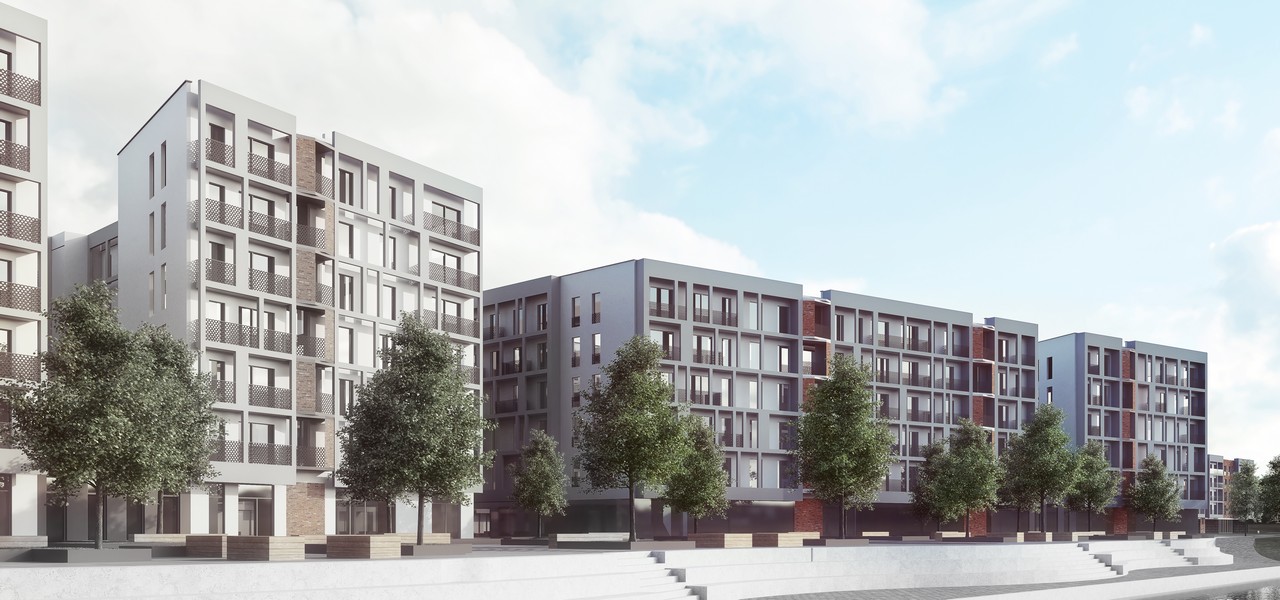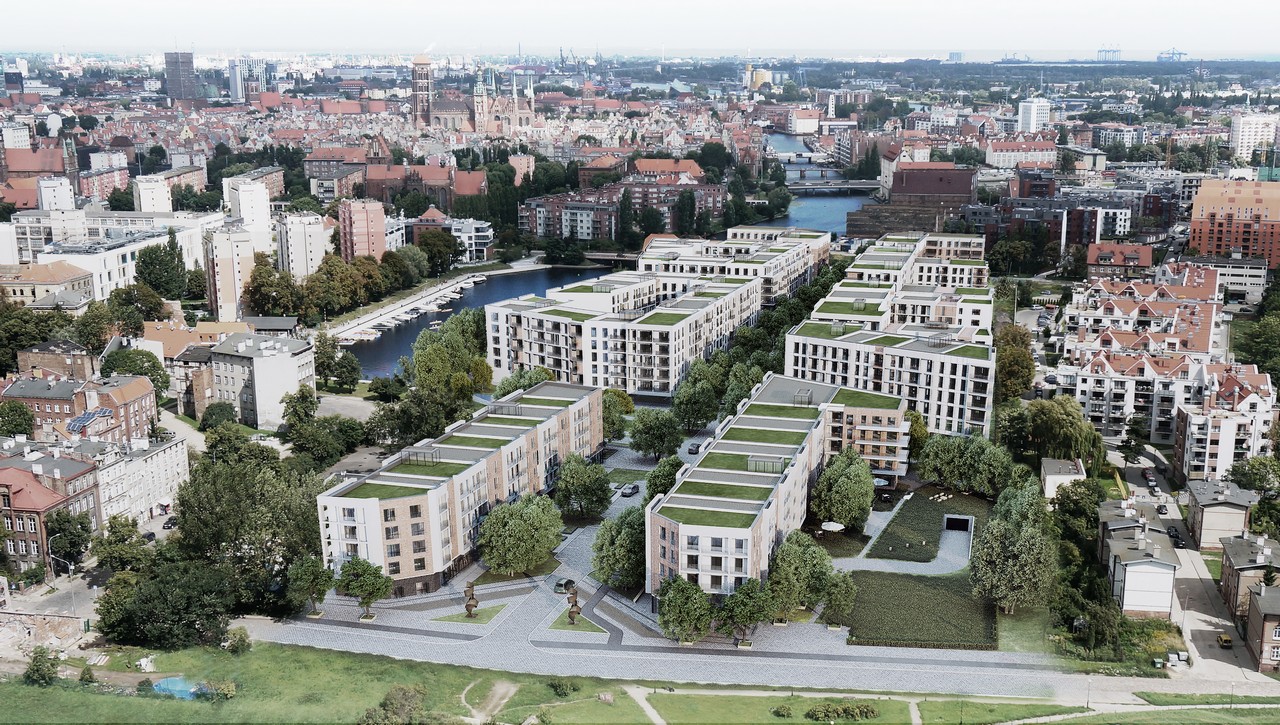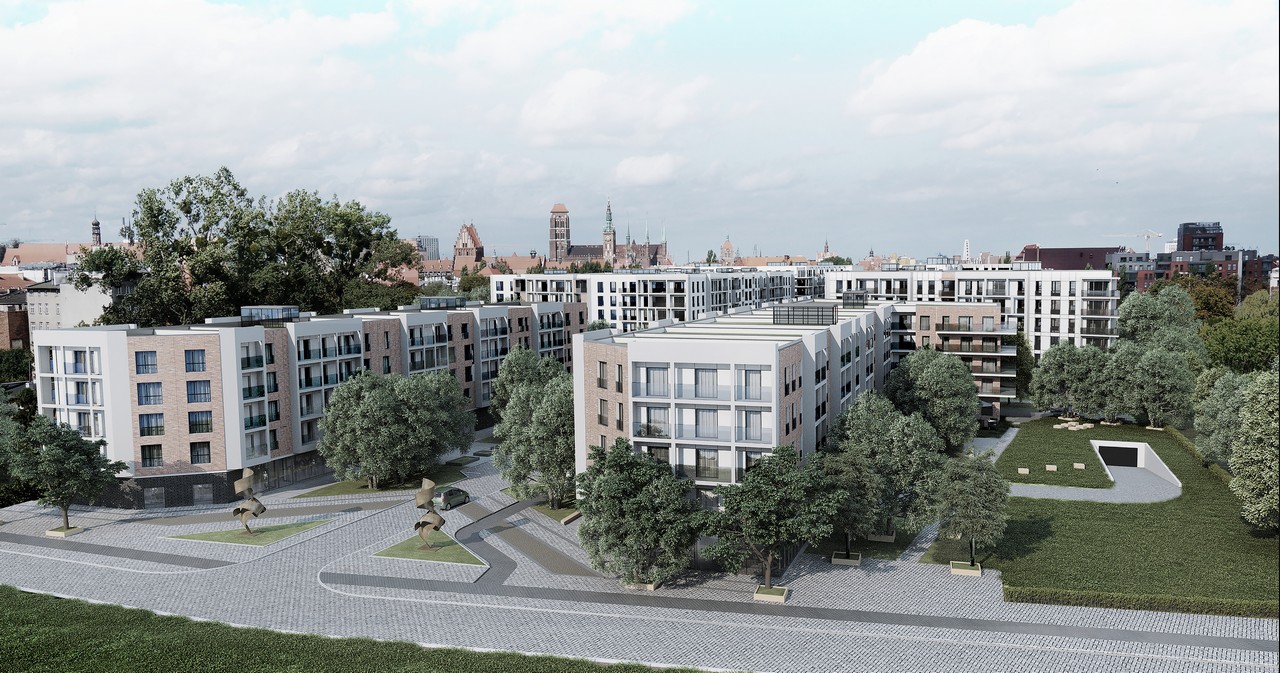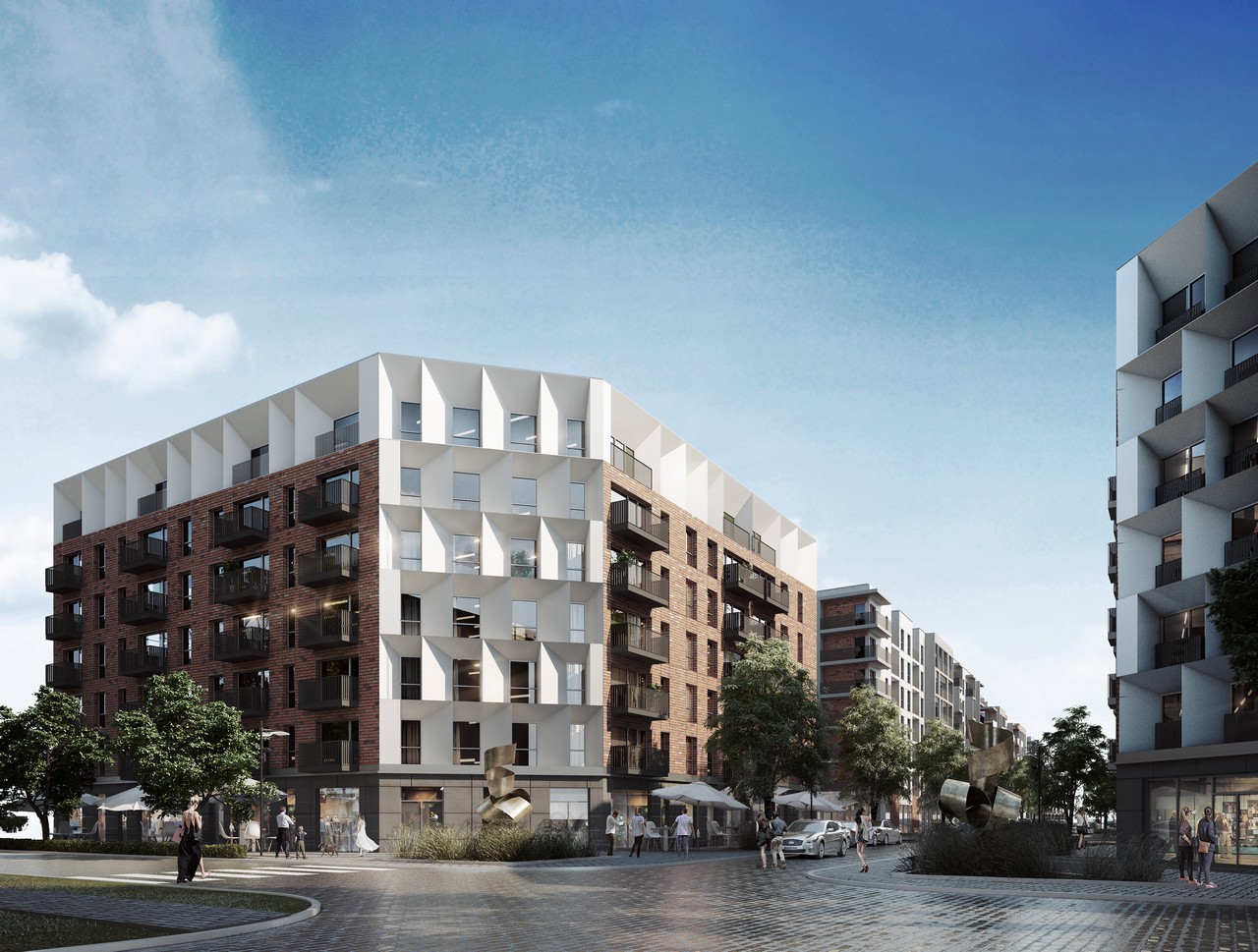TORUŃSKA
function:A complex of residential buildings with a service part on the ground floor
Toruńska St., Gdańsk
Inwestor Toruńska Sp. z o.o.
2016 r.
- building area: 18.425 m2
- usable floor area of apartments 56.709 m2
- usable floor area of services:7.961 m2br />
- total area: 114.152 m2
- number of flats: 915
- number of service premises: 40
- number of parking spaces in garage halls: 1.195
The concept design of the competition includes the newly designed development of a complex of residential buildings with services on the ground floors, road layout - streets, pedestrian and driveways, bicycle paths, development of public spaces (including a water square) with elements of small architecture. The designed development consists of 9 buildings, for which three different architectural expressions have been proposed. For such a large scale of development in relation to the fragmented and variable buildings in the immediate and more distant neighbourhood, it was found inappropriate to give the entire complex a uniform architectural expression. This would be contrary to the scale of buildings both on the Granary Island and in the Lower Town, where there are no such large homogeneous complexes of buildings. Thus, Toruńska Housing Complex has been given a contemporary architectural expression. In the façades of buildings Z1/1 and Z1/2 from Toruńska Street, mainly clinker bricks were proposed. . In this way, the existing buildings at Toruńska Street were referred to. As the designed development is higher than the neighbouring one and is characterized by atypical corners of the buildings, oblique planes and the top storeys made of other materials have been proposed (“sinter” plates). These white façade fragments have been given contemporary architectural tectonics. In buildings Z2 - Z4, monochromatic facades were designed with the use of white fibre-cement panels or sinters. Vertical elements made of clinker bricks were introduced in the facades of these buildings. The storeys of the ground floors are compositionally connected with the façades of the upper storeys with balcony frames. Characteristic elements of this part of the development are openwork frames constituting the construction of balconies. These elements are not included in the surface of the façade, which should be located on the existing building lines. In buildings Z2 and Z5, on the west side, cuts in the shapes of the buildings have been designed to open the view from the inner courtyards to the Water Square and Motława River to additionally improve their insolation. The third type of facade shaping was used in buildings Z6 and Z7. The elevations were given a vertical character, alternately shaped by white frames and fragments of clinker brick elevation. The compositional axis of the development is New Chmielna St with frontages, with a characteristic extension of the street area towards the south to the Motława River, which in this place forms an active water reservoir in the city centre. This main compositional axis (New Chmielna St) connects two squares, the first of which is built at the intersection of this street with Toruńska St, and the other at the southern end of New Chmielna St. The triangular forms of these squares constitute a specific opening and penetration into the designed complex of buildings. Another characteristic element of the composition is the opening of the designed buildings to the existing reservoir. This was achieved through breaks in the development of the quarters and the opening of internal courtyards in quarters C (building Z2) and E (building Z5). The green area is compositionally connected with the Motława River waterfront, which is emphasized by the soft line of the pedestrian route and the inner edge of the designed waterfront. Water Square The Water Square was created on the west side of the planned buildings. It is a public area from the Motława River. A new river embankment has been designed there, recreational areas and gardens at eateries. The pedestrian connection of the Square with New Chmielna and Toruńska St is exposed. The layout of the Water Square floor is delimited (without fencing elements) between the public area and the food gardens.










